Meeting Green Tara Face-to-Face: How to Visualize the Deity by Artist and Teacher Jampay Dorje
I think everyone reacts to art differently, most people will have a painting that is their favorite, and for some reason, this painting spoke to them in a way no other piece has. When it comes to Buddhist art, we look for a painting that seems to hold the deity within it in some way. That way when we look at the image we feel like we are approximating the experience of meeting the deity in everyday life.
By Ben Christian
a.k.a. Jampay Dorje
[Bio below.]
Finding Tara in Everyday People
As an artist, we try to experience the deity on some very profound level and then seek to convey that ‘meeting’ to others through colors and shapes. I think people are often curious about whether artists have access to some special ability to meet the deities and record their form.
I clearly remember as a child seeing Michelangelo’s paintings and thinking “oh he must be able to talk to God,” I could see it in his work, and for me that made him more holy than any priest. His communion with God was evident in everything he made, so I guess I saw an honesty there, free of pretense.
For my own part, I thought I could offer my own experience of finding Tara in the everyday people that I meet. I do so in the hope that everyone can meet their own deity and have magical experiences. There is no secret to it, it is nothing other than following the teachings on Valid Perception (Pramana) and Creation Stage Tantra (kyerim). The teaching on Valid Perception teaches us how our minds work, how we perceive things, and most importantly how we can change our minds. Creation Stage is not magic, it is simply the expression of how the mind works in the form of a path.
- Read our previous interview with artist Ben Christian Jampay Dorje>>
- Green Tara and other wonderful art by Ben Christian Jampay Dorje are available on his gallery page on Dakini As Art>>
- Other prints are available on the JampayDorje.com website>>

Did I Meet a Green Lady?
If I paint Tara and you feel a connection to her through the image you may be left wondering what my connection is to her? Did I meet a green lady downtown one day or maybe in a dream or am I just painting the colors and shapes of an art tradition?
I expect it would clarify things a little to discuss what is meant by the term “meet.” As beginners, I think we should adopt a step-by-step approach to meeting the deities. Initially, we are only able to meet the divine through a very heavy veil, but gradually — and with work — the veil becomes thinner and thinner, and eventually we are able to meet them face to face.
Lama Tsongkapa’s biography articulates this step-by-step process where he is eventually able to meet Manjushri directly as though talking to another person.
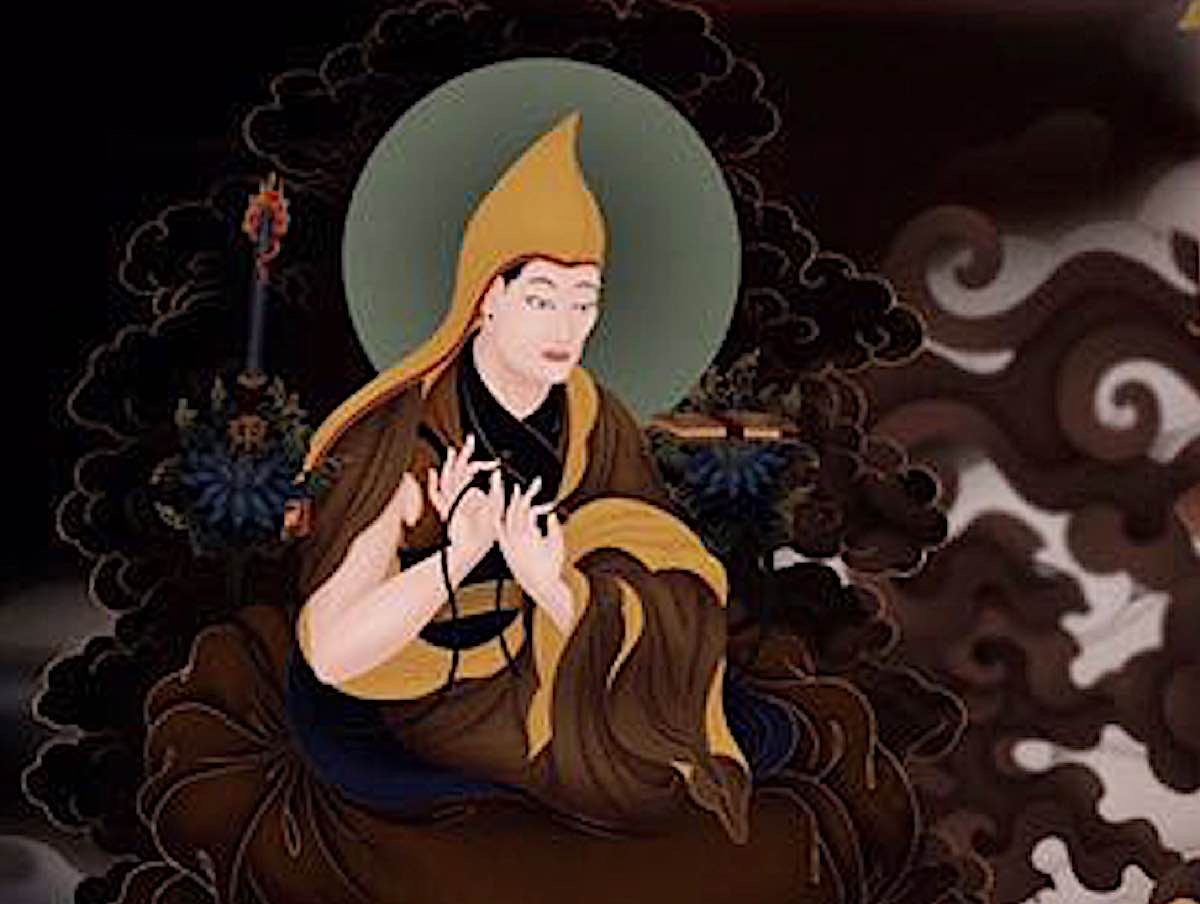
Meeting the Deity Step-by-Step
Here are some ways that we can meet a deity using a step-by-step method.
1. Reading or hearing descriptions.
Through reading or hearing descriptions of them we can form an approximate understanding when a (sound) mental image (tib: sgra spyi) begins to form in our mind. A sound mental image is a kind of perception based on words. If I say the words ‘Planet Xylon’ to you and you check in with your mind an image will have formed regardless of whether you have been there or not. The exact same thing happens when we learn about the deities through words… we meet them through a sound mental image.
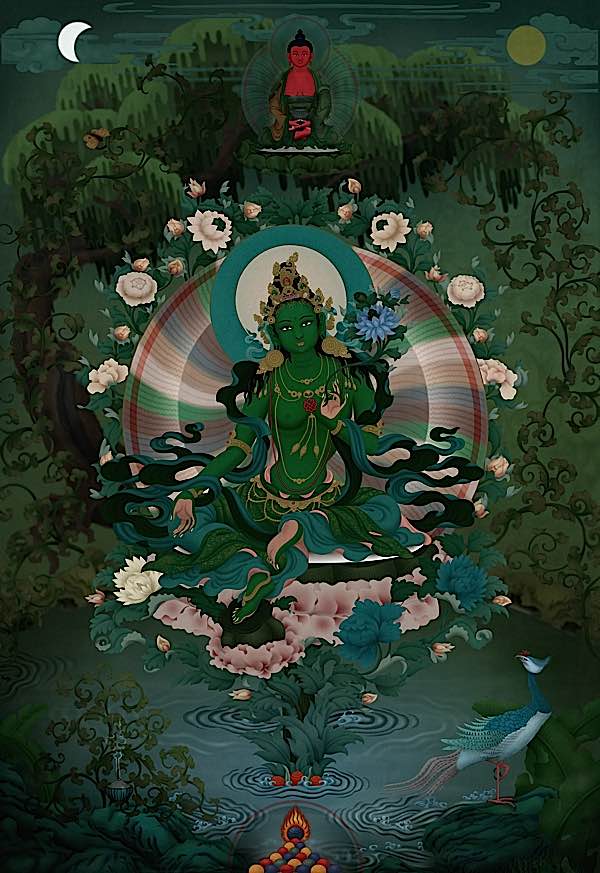
2. We can see a depiction of their Body in the form of a painted image or statue.
With this, a (visual) mental image (tib: don spyi) merges with the sound image then we know them a little closer. A Mental image is a perception that arises within our mind based on having seen or know a thing before. An example of this is the mental image that arises of your mother when you think of her.
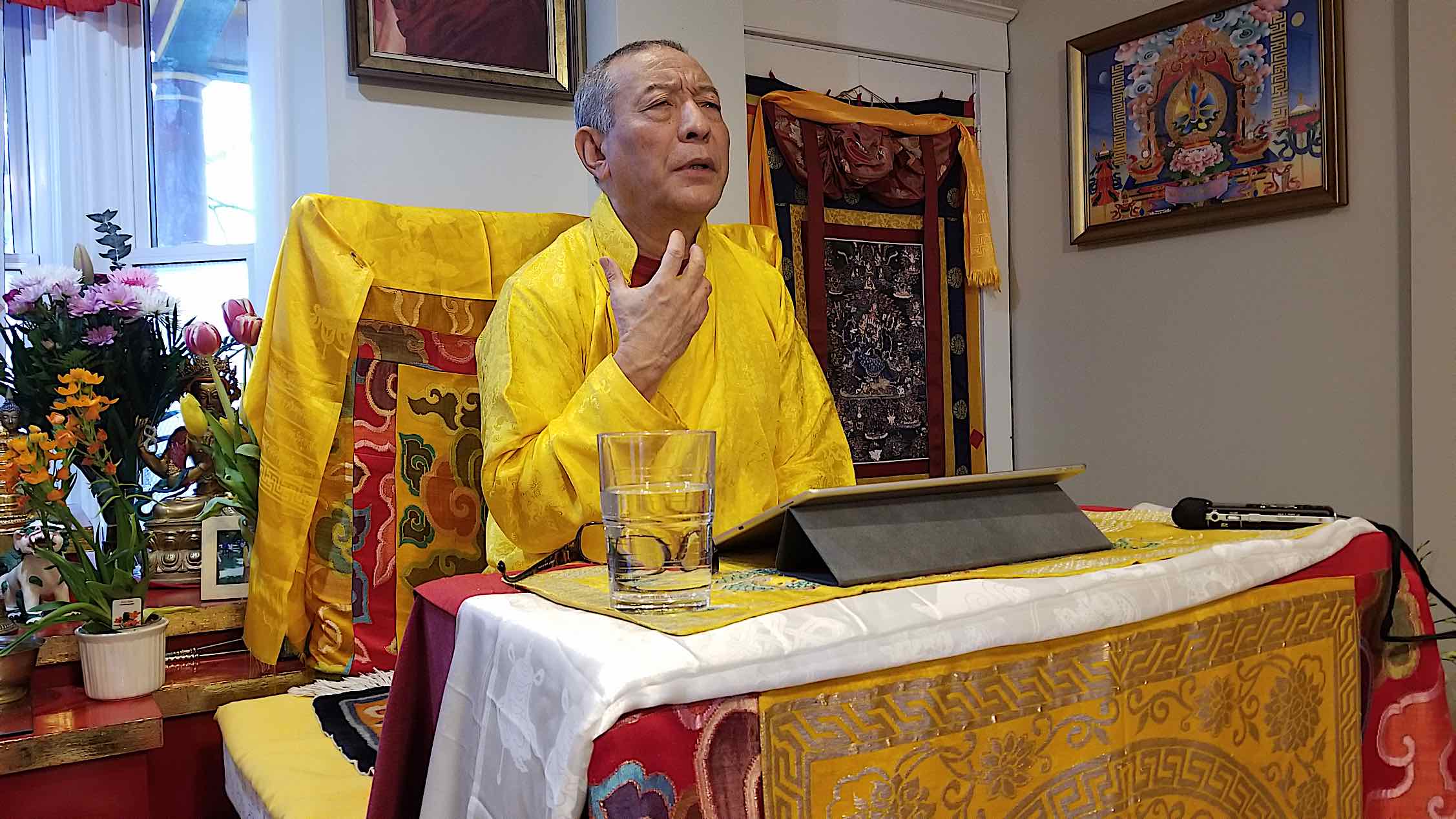
3. Receive empowerment and practice their sadhana.
Here we are building on the first two, we continue to refine and cultivate the images in our mind. Creation stage Tantra is very much for this purpose.
4. We can meet them in a dream.
I think this is easy to understand.
5. We can have a vision.
A vision is where we have some kind of perception of them, however, it is not as though they are in front of us like meeting an old friend.
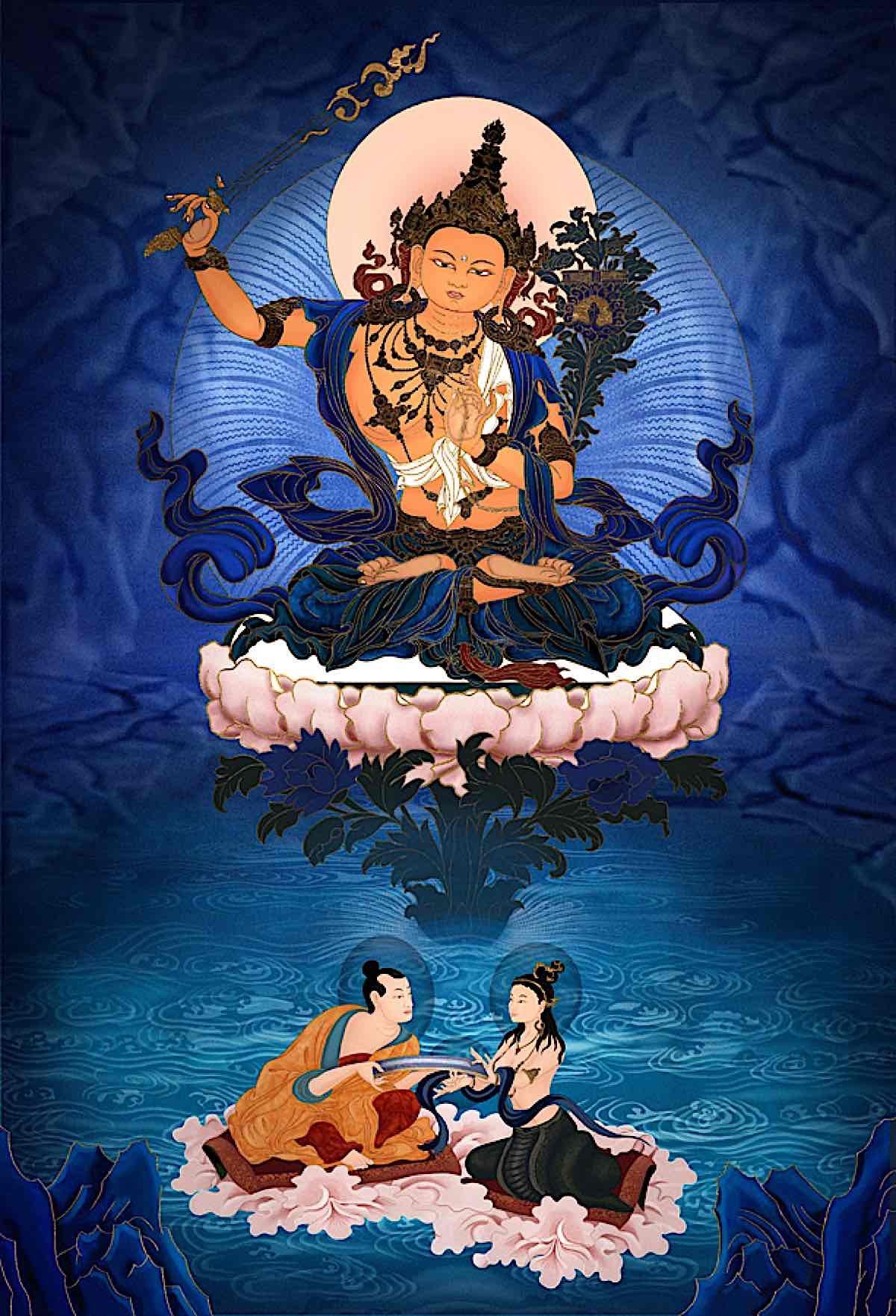
6. We can meet them through the medium of another person.
Here our familiarity with the deity allows them to bleed into the people around us. This could occur through imagination or occur quite spontaneously. Regardless, there would need to be some understanding of the emptiness of
the people around us to allow for this to happen. After all, it is quite difficult for the divine to sit on top of the ordinary. However if the ordinary nature of the people around us was found to be unfindable…. then divine can quite easily arise.
7. We meet them face to face.
This is how it eventually was for Lama Tsongkapa. He could talk directly to Manjushri as easily as we can talk to our neighbor.
Empowerment and Sadhana
I think number 3 is worth expanding on since it is where the majority of the work is done. Really numbers 4 to 7 are actually the result of 3, and the virtue to be attracted to 1 and 2 is also the result of number 3, so it is quite important.
The process is a little like this:
- We continue to build the mental image through the magic of the sadhana.
- As this image grows it eventually spills over from our meditation into the everyday state.
- Gradually the sadhana becomes all things. Not only do we get closer to them we also become familiar with their world and most importantly we meet them as an indivisible aspect of our own body and world.
- As our understanding of emptiness grows we can find them in all things.
Since the Dharmakaya has no bounds we give up the childish visions we initially had, limited minds that held the deity to a particular form, time, or personality. The passage of time, the air we breathe, our own afflicted thoughts, our own suffering are all equally the deity, they are met in every moment.
Artists Have a Small Problem
So I guess as artists we have a small problem. In order to paint the deity we need to have met them on some level.
To my mind, it is insufficient simply to reproduce the visual form of a deity strictly according to mathematical grids and predefined rules of color and composition. I think when a person has a yidam and they search for a painting of that yidam they will only be attracted to a work which indicated the artist has also met the deity. Otherwise, the image is too dry, the deity hasn’t entered the work.
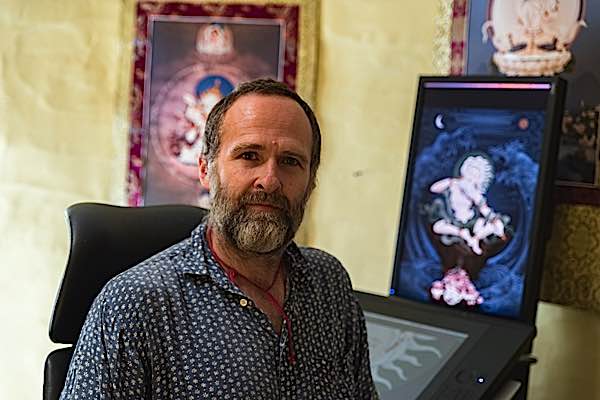
The Deity Enters the Image
There is a stage in each work where the deity enters the image, it is a magical moment and makes all the hours of painful and meticulous preparation seem trivial. At other times the deity never comes, this feels quite sad.
I find it almost impossible to try to paint a deity that I haven’t met on some level. It feels very unpleasant. Interestingly though, when the Guru asks us to paint something, simply hearing the holy name of the deity from their lips is enough to meet them in the most profound way… perhaps this is something like an empowerment.
With great love, Ben (Jampay Dorje)
3 thoughts on “Meeting Green Tara Face-to-Face: How to Visualize the Deity by Artist and Teacher Jampay Dorje”
Leave a Comment
More articles by this author
Search
Latest Features
Please support the "Spread the Dharma" mission as one of our heroic Dharma Supporting Members, or with a one-time donation.
Please Help Support the “Spread the Dharma” Mission!

Be a part of the noble mission as a supporting member or a patron, or a volunteer contributor of content.
The power of Dharma to help sentient beings, in part, lies in ensuring access to Buddha’s precious Dharma — the mission of Buddha Weekly. We can’t do it without you!
A non-profit association since 2007, Buddha Weekly published many feature articles, videos, and, podcasts. Please consider supporting the mission to preserve and “Spread the Dharma." Your support as either a patron or a supporting member helps defray the high costs of producing quality Dharma content. Thank you! Learn more here, or become one of our super karma heroes on Patreon.
Ben Christian
Author | Buddha Weekly
Jampay Dorje, also known as Ben Christian, has a mission in life. Dividing his time between retreat, teaching digital art, and creating Thangkas for Buddhist practitioners, he has become well known on the internet for his spectacular images. Ben Christian is also a teacher of Dharma. To read more about Ben Christian, Buddha Weekly interviewed him, found here>> The fine art prints website for Jampay Dorje's amazing art is here>> You could also consider becoming one of his patrons on Patreon>>






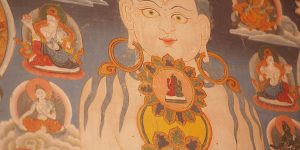







There is no image of a Green Tara on the site at jampaydorje.com right now.
Hi Eduard — Sorry, my oversight, the Tara art is available on Ben’s Dakini As Art page here: https://dakiniasart.org/gallery/artists/ben-christian/
The blog is so interesting to read !